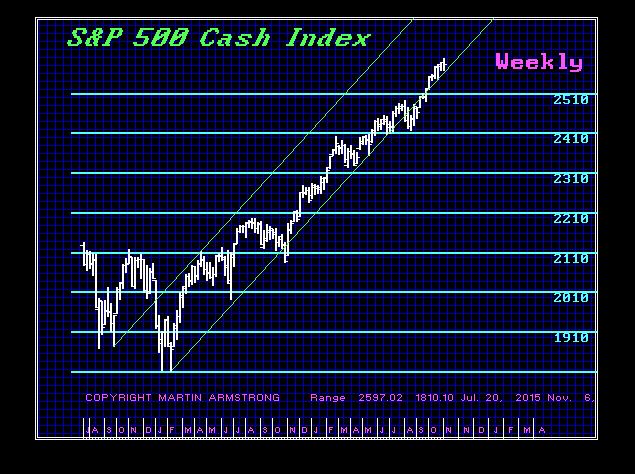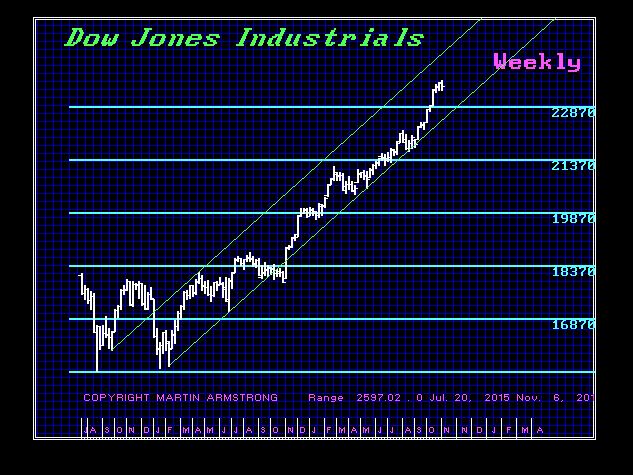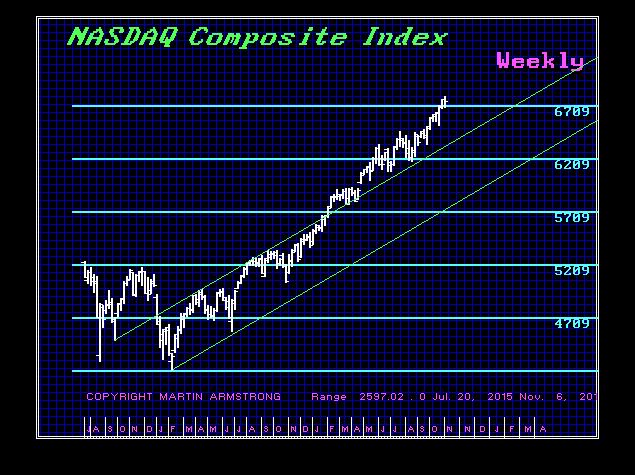The Dow v S&P500 v NASDAQ – What’s the Difference?
QUESTION: Dear Mr. Armstrong
Why do you always use the Dow Jones Index? It seems to have the least logical construction of the major indices. Why not use the S&P500?
Many thanks for your informative and thought-provoking blog,
G
ANSWER: Each index offers a completely different perspective. The Dow Jones Industrials is the “big” money. You will notice that this index leads the way. It is the first out of a key low because it is typically the foreign capital that comes in based on currency. You will also notice it tend to top out first because the big money tends to start to pull out first also due to currency.
The S&P500 is domestic institutions and this tends to reflect the more serious money in the market.
Last, but not least, is the NASDAQ. This is the retail market. You will see this is the last to peak and is the one that gets the retail all hot and bothered.
Each index has its place and reflects a different segment. The foreign capital always buys the big names. That is why the Dow is very important. It is also where big money parks in crisis.



